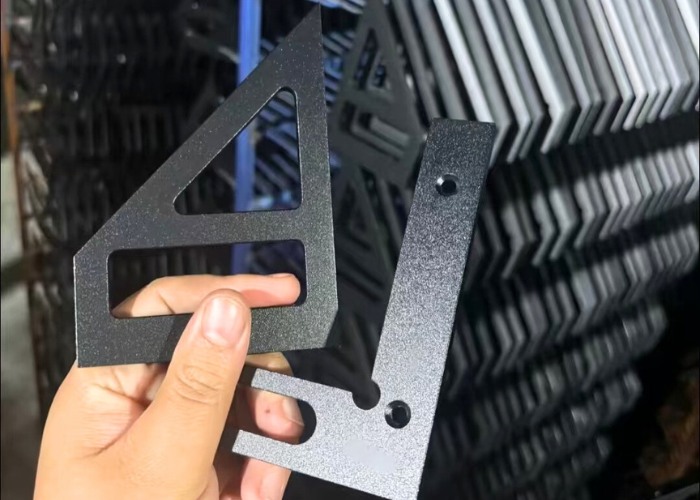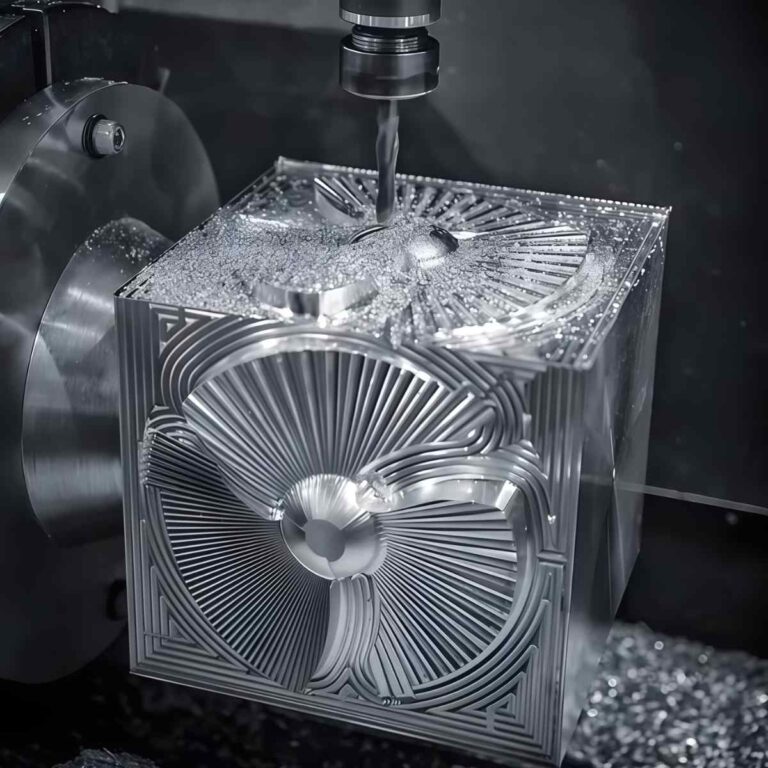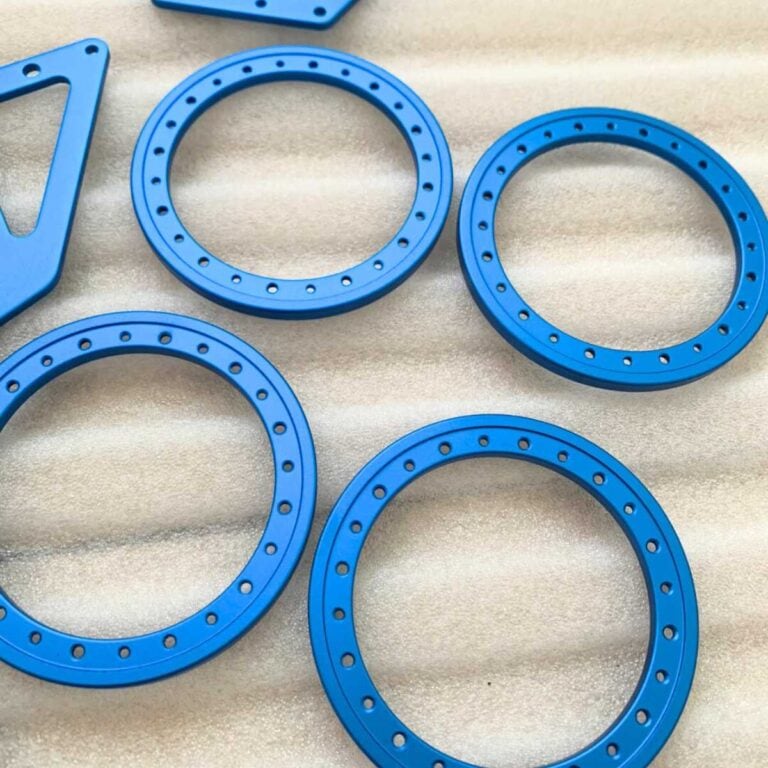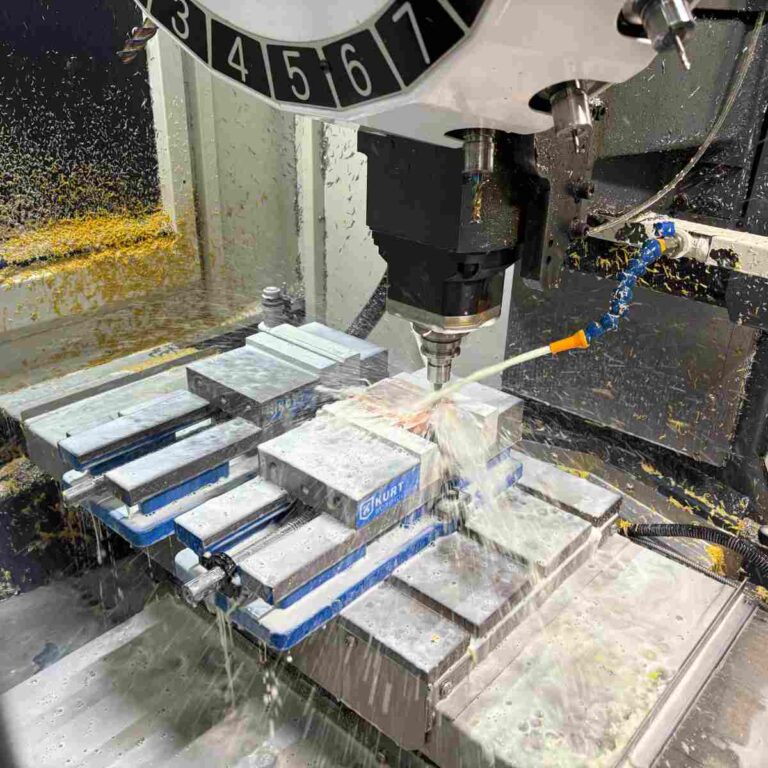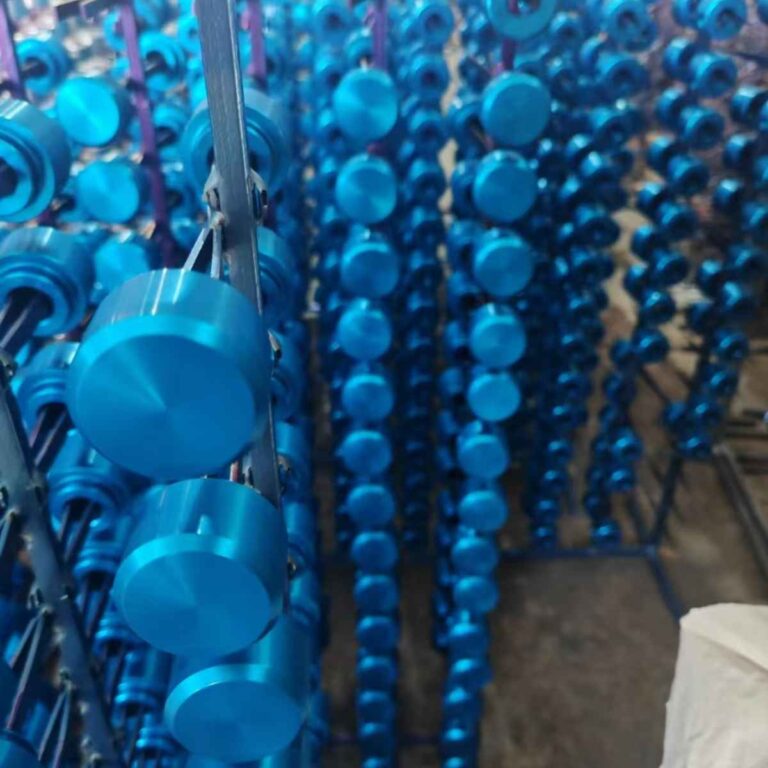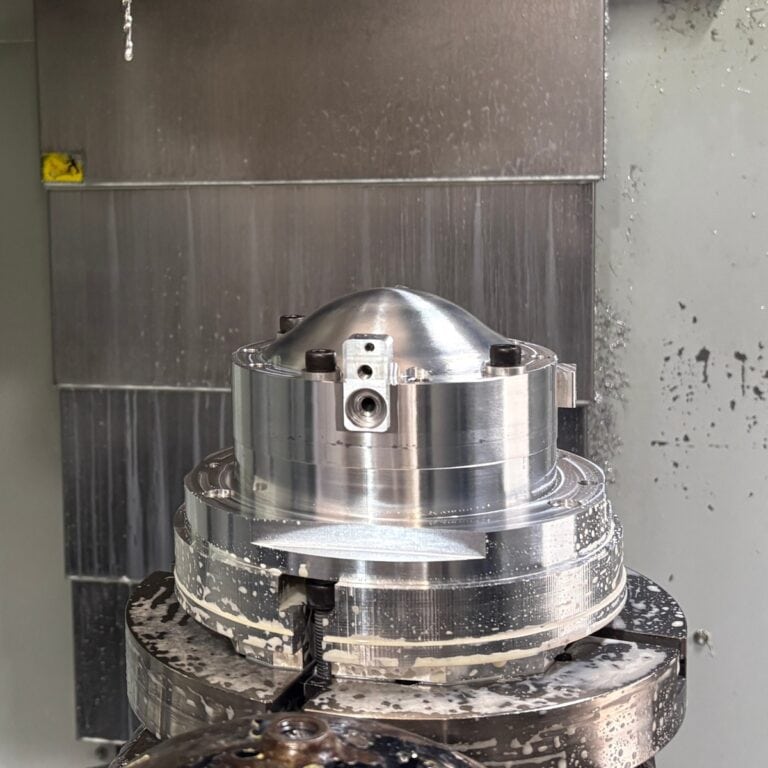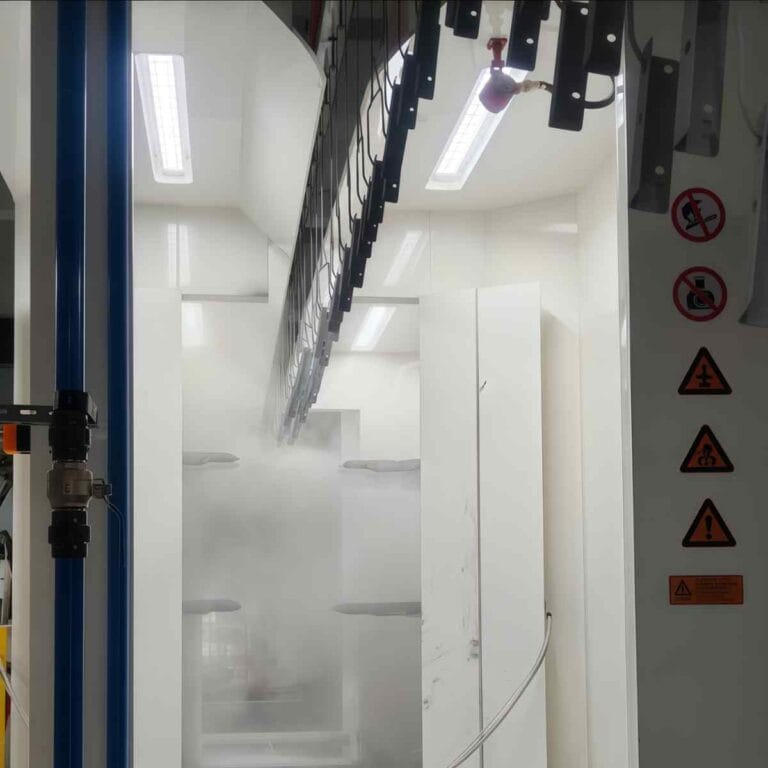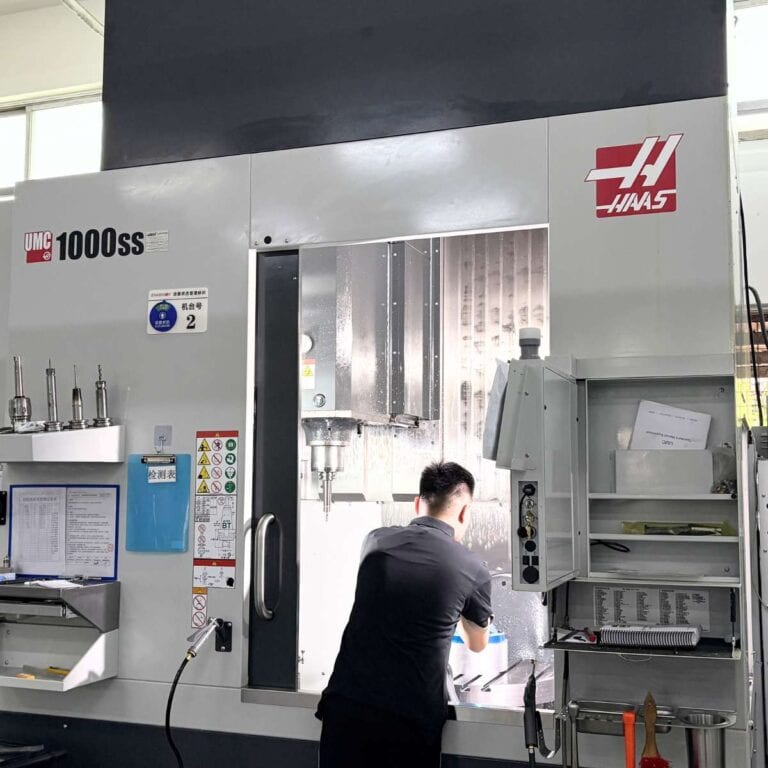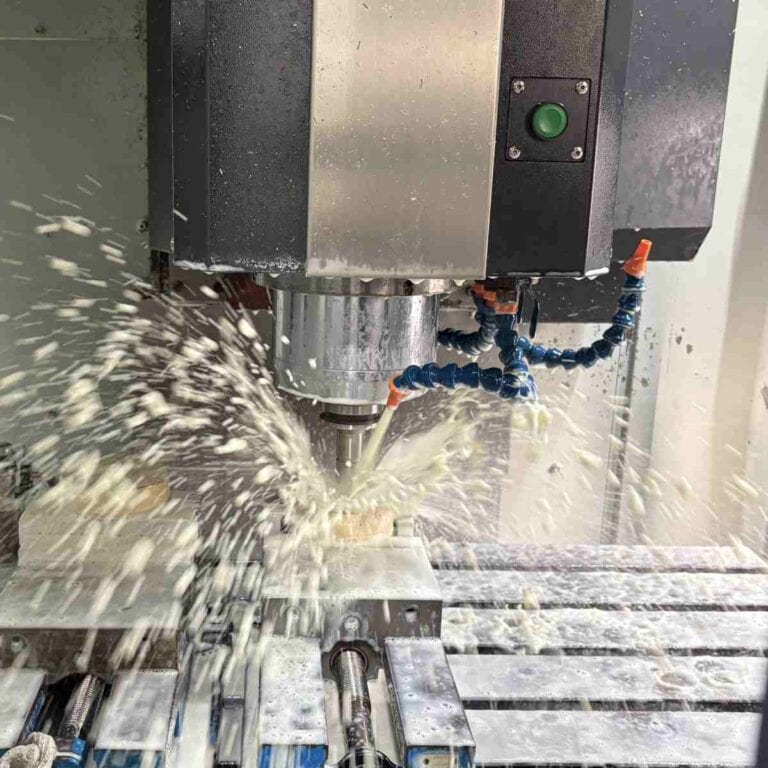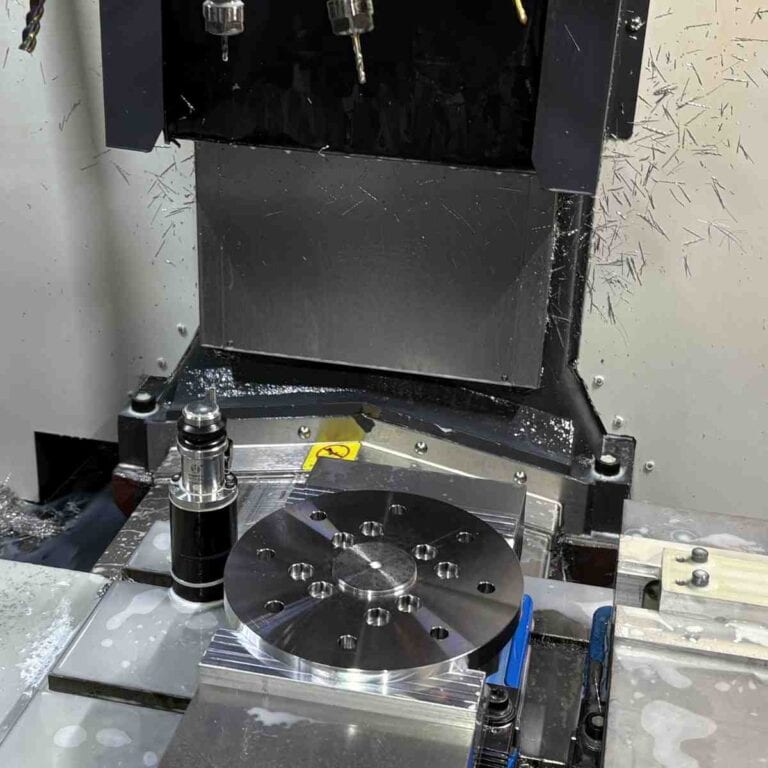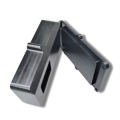PEEK (Polyetheretherketone) is a high-performance thermoplastic known for its excellent mechanical, thermal, and chemical properties. In this article, I will take an in-depth look at all aspects of PEEK processing, including its properties, material grades, applications, processing methods, key processing techniques, and design considerations. Additionally, I’ll explain what is cnc turning and how it’s used in PEEK machining, highlighting its role in producing precise components for high-performance applications.
What Is PEEK
PEEK is a semi-crystalline thermoplastic known for its high strength, stiffness, and resistance to chemicals and heat. These properties make it suitable for demanding applications where other plastics or metals might fail.
It is a semi-crystalline thermoplastic material in the PAEK family that is often used to make critical components. It has an excellent tensile strength of 90 to 100 MPa, can maintain structural integrity at continuous operating temperatures up to 250°C, and has a melting point of up to 343°C.
Its chemical resistance is comparable to that of nickel alloys, and its moisture absorption rate is less than 0.1%, which is critical for dimensional stability. At present, it is widely used in aerospace pipelines, spinal implants, and automotive precision gears, where wear resistance, hydrolysis resistance, and radiation resistance are critical.
Properties Of PEEK
PEEK offers an exceptional balance of mechanical strength, thermal resistance, electrical insulation, and chemical stability, making it ideal for high-performance environments. With tensile strength up to 100 MPa, a flexural modulus near 4 GPa, and continuous use at 260°C, it resists deformation under stress and heat. Its dielectric strength and resistance to solvents, acids, and moisture (<0.1% absorption) ensure reliable performance in aerospace, medical, and electronics applications.
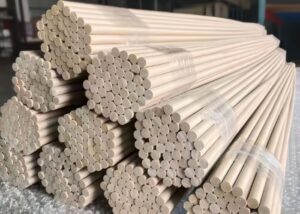
This section will briefly introduce the performance of PEEK materials in terms of mechanical, thermal, electrical and chemical properties, and list its advantages and limitations as a processing material:
Mechanical: High tensile strength and stiffness, maintaining integrity under mechanical stress.Its tensile strength is typically between 90-100MPa and its flexural modulus is approximately 4GPa.
Thermal: Melting point around 343°C (649°F), with continuous use temperatures up to 260°C (500°F).
Electrical: Excellent dielectric properties, making it suitable for electrical insulation applications.
Chemical: Resistant to a wide range of chemicals, including acids and solvents, with low moisture absorption.
Advantages And limitations Of PEEK In Processing
Advantages
| Feature | Description |
| High strength-to-weight ratio | Offers excellent mechanical strength while remaining lightweight. |
| Outstanding wear resistance | Maintains durability in high-friction, long-cycle applications. |
| Biocompatibility | Safe for prolonged contact with human tissue—ideal for implants and tools. |
| Flame retardant, low smoke | Rated V-0, emits minimal smoke and toxins under combustion. |
Limitations
| Limitation | Description |
| High material cost | Typically 10–20 times more expensive than common engineering plastics. |
| Demands specialized processing | Requires high-temperature tools and tight process control (melting point ~343°C). |
| Poor heat dissipation | Prone to heat buildup during machining—requires active thermal management. |
| Internal stress sensitivity | Susceptible to warping or cracking if not properly annealed before machining. |
Types And Grades Of PEEK Materials
PEEK comes in multiple grades tailored for specific performance needs. I often choose industrial-grade PEEK for its 90–100 MPa tensile strength and chemical resistance, and medical-grade for its USP Class VI biocompatibility and sterilization tolerance. Reinforced types like glass-filled PEEK improve stiffness, while carbon-filled grades offer superior thermal conductivity and load capacity.
Common PEEK Grades And Their Uses
Industrial-Grade: Industrial-grade PEEK is commonly used to manufacture aerospace and automotive components that require tensile strengths of 90-100MPa and heat resistance to 250°C. It is dimensionally stable, wear-resistant, and resistant to corrosive fluids, making it ideal for manufacturing gears, bushings, and structural brackets in harsh environments.
Medical-Grade: Medical grade PEEK is commonly used in implants and surgical devices because of its 90-100MPa tensile strength, radiolucency, and USP Class VI compliance. It is autoclavable and can simulate the stiffness of bone, making it ideal for long-term biocompatible medical applications.
Filled Types Of PEEK (e.g., Glass Fiber, Carbon Fiber Reinforced)
Glass Fiber Reinforced PEEK:Glass fiber reinforced PEEK offers 30% glass fiber content, increasing its flexural modulus to over 6 GPa and reducing thermal expansion. I often use it in structural components requiring long-term dimensional stability, especially under continuous temperatures above 150°C and static mechanical loads.
Carbon Fiber Reinforced PEEK: Carbon fiber reinforced PEEK usually contains 30% carbon, has a tensile strength of up to 120 MPa, and a thermal conductivity of up to 3.5 W/m·K. It is often used in aerospace brackets or automobile shells, which need to have high stiffness, wear resistance and heat dissipation when subjected to mechanical loads for a long time.
USP Class VI Certified PEEK Materials
These materials meet stringent biocompatibility standards, making them suitable for medical devices and implants that come into contact with bodily fluids or tissues.
Common PEEK Processing Methods
PEEK can be processed through CNC machining, injection molding, 3D printing, and EDM. We often use CNC for ±0.01 mm tolerances and complex geometries, while injection molding suits large-scale production. 3D printing (FDM) requires chambers over 400°C, and EDM is ideal for intricate PEEK parts where traditional cutting fails.
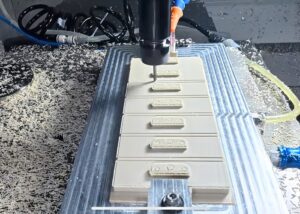
CNC Machining (Milling, Turning, Drilling, etc.)
CNC Milling
I typically use 3-axis or 5-axis CNC machines to mill complex PEEK geometries. For planar parts, 3-axis suffices, but for intricate components like spinal implants or aerospace seals, 5-axis setups allow multi-face machining in one clamping, minimizing errors and improving consistency.
With 5-axis milling, I consistently hold tolerances within ±0.01 mm—essential for assemblies in aerospace and medical sectors. When machining GF30 or CF30 grades, I use rigid fixtures, optimized toolpaths, and stepovers under 10% of the tool diameter to prevent delamination or edge cracking.
CNC Turning
I I machine cylindrical PEEK parts like bushings, valve seats, and guide rings for aerospace, medical, and chemical uses requiring high wear resistance and dimensional stability. These parts demand tight tolerances and smooth surfaces for long-term sealing performance.
Spindle speeds range from 1000–3000 RPM, adjusted by diameter and grade—lower on CF30 to control heat. Feed rates are set between 0.05–0.15 mm/rev for steady cuts.
Using carbide or PCD tools, I routinely achieve Ra 1.6 μm finishes. For critical sealing zones, I apply low-feed finishing passes to ensure circularity and 0.01 mm concentricity.
Drilling
WhenWhen drilling PEEK, I limit the depth-to-diameter ratio to 10:1 to reduce heat buildup and prevent cracking. For unfilled PEEK, I use through-coolant drills at 800–1500 RPM with 0.05–0.2 mm/rev feed rates to ensure clean, burr-free holes.
For medical-grade PEEK, I avoid liquid coolants and use compressed air to maintain biocompatibility. In abrasive grades like CF30, I rely on PCD drills to extend tool life and maintain ±0.01 mm hole tolerance across production runs
Precision control and quality assurance
I use ZEISS CMM to ensure all PEEK parts meet ±0.01 mm tolerances throughout processing. For medical components, I operate in a clean room with dedicated tools to avoid contamination. These controls ensure high-strength, high-precision parts for aerospace, implants, and advanced electronics.
Injection Molding And 3D Printing (FDM/FFF)
Injection Molding: In my experience, injection molding is ideal for high-volume PEEK parts with tolerances around ±0.05 mm. I use it for components like housings or insulators, where 160 °C mold and 400 °C melt temperatures ensure proper crystallinity. Each cycle typically completes in under 60 seconds.
Typical shrinkage rates range from 1.2% to 2.5%, which must be considered in mold design.
3D Printing (FDM/FFF): Allows rapid prototyping and production of complex geometries, but due to the high melting point of PEEK at 343°C, I use a dedicated printer with a nozzle temperature above 400°C and a heating chamber temperature of around 120°C. This approach allows me to iterate on designs quickly, especially when it comes to lightweight, biocompatible components.
However, interlayer adhesion and warping remain challenges in large medical-grade parts without active chamber temperature control.
Electrical Discharge Machining (EDM) And Other Non-Traditional Methods
In my work, I use Electrical Discharge Machining (EDM) when PEEK components require ultra-fine details or internal geometries that CNC tools can’t reach. Although EDM is less common for plastics, carbon-filled PEEK with enhanced conductivity makes it feasible. I’ve successfully used this method to produce features as small as 0.2 mm, maintaining ±0.01 mm tolerance.
EDM only works on conductive PEEK composites like CF30 due to the need for electrical discharge pathways.
Other methods include ultrasonic machining and laser micromachining for specialized features.
Key Processes In PEEK CNC Machining
To achieve precision and stability in PEEK machining, We should focus on stress-relief annealing, correct tool selection, and effective thermal management. PEEK’s high melting point (343°C) and poor heat dissipation require optimized speeds, feeds, and clean conditions—especially for medical-grade parts—to avoid warping, tool wear, and contamination.
Annealing To Reduce Internal Stress
Annealing is a critical pre-machining step for PEEK. I typically heat PEEK blanks to 150–200°C for 2–4 hours, depending on size and grade, then cool them slowly in a controlled environment. This process relieves internal stress, increases crystallinity, and helps prevent surface cracking or dimensional deformation during prolonged machining, especially for tight-tolerance components. For large parts or extended cutting cycles, I often perform intermediate annealing steps to ensure long-term dimensional stability.
Tool Selection: Carbide And Polycrystalline Diamond Tools
When machining PEEK, I rely on sharp, wear-resistant tools—solid carbide for unfilled grades and polycrystalline diamond (PCD) for carbon or glass-filled types. Carbide maintains edge integrity for up to 4 hours, PCD exceeds 10 hours. This ensures clean edges and prevents delamination, crucial for medical parts needing Ra < 1.6 μm. TiAlN coatings help reduce heat and friction.
Use Of Coolants And Thermal Management
In my experience machining PEEK, proper thermal management is critical due to its low thermal conductivity (\~0.25 W/m·K). I often use compressed air cooling for dry machining, especially on medical-grade parts to preserve biocompatibility. For industrial-grade PEEK, I apply oil-free coolants or water-soluble synthetics to avoid heat buildup that can cause thermal expansion or surface defects. Maintaining a consistent cutting zone temperature below 150°C helps prevent edge melting, dimensional drift, and tool wear. In high-speed operations, I monitor coolant flow rates above 3 L/min to stabilize surface integrity and extend tool life.
Machining Parameter Settings And Contamination Control
When machining PEEK, I carefully optimize cutting speeds (typically 50–250 m/min) and feed rates (0.05–0.5 mm/rev) to achieve dimensional tolerances within ±0.02 mm and surface finishes below Ra 1.6 μm. Improper settings can cause chatter, tool marks, or thermal distortion. For medical-grade PEEK, We also maintain a contamination-free environment by isolating the machining zone, using dedicated tooling, and storing parts in sterile containers. This ensures biocompatibility and compliance with USP Class VI standards, which is critical for surgical implants or instruments.
Typical Applications Of PEEK
The properties of PEEK, combined with its chemical inertness and flame retardancy (V-0 rating), make it highly suitable for harsh environments. I often use PEEK in aerospace brackets, spinal implants, semiconductor insulation, and automotive seals, where dimensional stability, wear resistance, and regulatory compliance are critical. Its consistent performance under stress and exposure makes it the material of choice for high-precision, high-reliability applications.
| Industry | Application Details |
| Medical Devices | Used in spinal cages, dental abutments, orthopedic implants, endoscopic tools, and surgical instruments. Offers biocompatibility (USP Class VI, ISO 10993), sterilization resistance, and radiolucency in MRI/X-ray imaging. |
| Aerospace Manufacturing | Applied in cable sheaths, insulators, structural brackets, and engine-area parts. Offers low density (~1.3 g/cm³), thermal stability up to 260°C, and UL94 V-0 flame rating. |
| Automotive Manufacturing | Used in gears, bearing cages, seals, and fuel components. With fiber reinforcement, handles high temperature and chemicals. Tensile strength ranges from 90–100 MPa. |
| Electronics & Semiconductor | Used in wafer carriers, connectors, IC test sockets, and insulators. Withstands soldering temperatures (343°C), dielectric strength >20 kV/mm. |
| Petrochemical & Energy Equipment | Applied in pump vanes, valve seats, compressor parts, and downhole tools. Resists acids, steam, and high-pressure conditions with chemical stability. |
| Food Processing & Packaging | Used in scrapers, bushings, filling valves. FDA/EU compliant, <0.1% moisture absorption, and withstands CIP/SIP sterilization cycles. |
| 3D Printing & Prototyping | Used for lightweight prototypes of implants or aerospace parts. FDM-grade PEEK requires 400–450°C nozzle and ~120°C chamber temperature. |
| Chemical Processing | Used in gaskets, pipe linings, impellers, and manifolds exposed to aggressive chemicals. Resists nitric/sulfuric acids and solvents at elevated temperatures. |
FAQs
Is PEEK Hard To machine?
Yes, PEEK requires more technical expertise to machine compared to other plastics. For example, due to its high melting point (343°C), it has poor heat dissipation. Without proper annealing and thermal control, internal stresses can cause warping or cracking, especially on parts with tight tolerances..
Is PEEK Better Than Delrin For Machining?
In my experience, Delrin is easier to machine due to its lower hardness and better chip evacuation. However, PEEK offers superior thermal (up to 260°C) and chemical resistance, making it better for high-performance or harsh-environment applications.
What Is PEEK In Manufacturing?
PEEK (Polyether Ether Ketone) is a high-performance thermoplastic used in CNC machining, injection molding, and 3D printing. I use it where parts require strength (>100 MPa tensile), heat resistance (260°C), and chemical stability across critical industries.
Can An Injection Molding Machine Run The PEEK Material?
Yes, but I use specialized high-temperature molding machines since PEEK’s processing temperature reaches 400°C. Screw and barrel design must prevent degradation, and mold temperatures must be precisely controlled (around 160°C) for proper crystallinity.
How To Use 3D Printing With PEEK Filament For Medical Use?
I typically print PEEK for medical devices using an FFF 3D printer with a closed heating chamber that can reach temperatures up to 450°C. To ensure biocompatibility, we choose USP Class VI certified PEEK and perform post-processing sterilization to avoid contamination during the entire printing cycle.
Conclusion
PEEK is a high-performance thermoplastic known for its strength, chemical resistance, and thermal stability up to 260°C. I’ve used it extensively in aerospace, medical, and semiconductor components through CNC machining, injection molding, and 3D printing. Despite its high cost and processing complexity, PEEK delivers unmatched precision and reliability in harsh environments. I hope this article has been helpful—visit our official website to explore more on advanced material processing.

